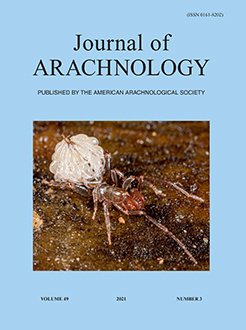The large size and slow movements of mature female Trichonephila clavipes (Linnaeus, 1767) permit observations of some seldom-studied details of behavioral processes, such as cutting and initiating silk lines, that help clarify functional morphology. Silk lines were cut after being grasped by the cheliceral fangs; but direct observation and details of cheliceral morphology showed that cutting was not accomplished mechanically, as has sometimes been assumed. Lines were probably cut by contact with an enzyme in the mouth region. Initiation of wrapping lines involved rapid, coordinated movements of the spinnerets and the abdomen that caused the spigots for these lines to brush against each other and dragline silk. The posterior lateral spinnerets were spread widely during wrapping; this behavior and the positions of spigots on the spinnerets probably serve to widen the swath of wrapping lines applied to the prey.
How to translate text using browser tools
10 December 2021
Small details in a large spider: cheliceral and spinneret behavior when Trichonephila clavipes (Araneae: Araneidae) cuts lines and wraps prey
William G. Eberhard
ACCESS THE FULL ARTICLE

The Journal of Arachnology
Vol. 49 • No. 3
December 2021
Vol. 49 • No. 3
December 2021
aciniform wrapping lines
cheliceral morphology
silk-degrading enzyme
spinneret morphology




